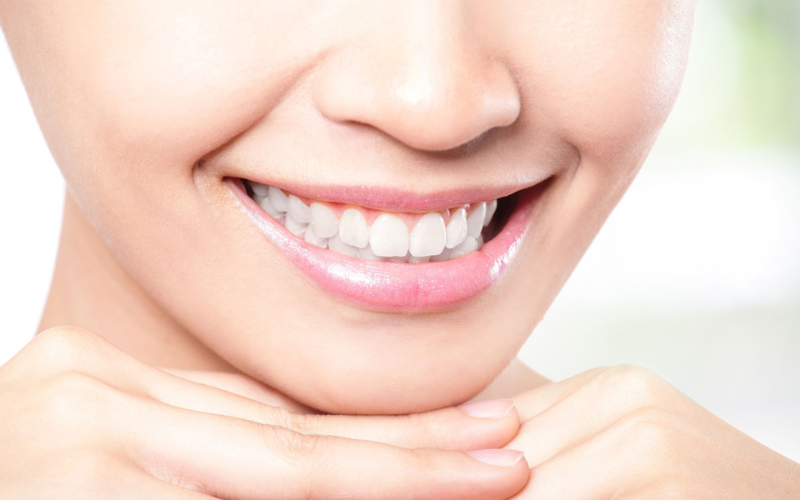
Thin gums, also known as gum recession, can be a significant concern for many patients. This condition can lead to tooth sensitivity, increased risk of decay, and even tooth loss if not addressed properly. Fortunately, advancements in dental medicine have introduced innovative treatments that can effectively combat the effects of thin gums. One such breakthrough is Platelet-Rich Fibrin (PRF) therapy.
Here’s why this therapy is a game-changer for patients with thin gums, its benefits, how it works, and what to expect during the treatment process.
About Thin Gums
Before diving into the benefits of PRF therapy, it’s essential to understand what thin gums are and why they occur.
What Causes Thin Gums?
- Genetics: Some individuals are genetically predisposed to thin gums.
- Poor Oral Hygiene: Lack of proper dental care can lead to gum disease, which may result in gum recession.
- Aggressive Brushing: Brushing too hard can damage the gum tissue.
- Hormonal Changes: Hormonal fluctuations, particularly in women, can affect gum health.
- Smoking and Tobacco Use: These habits can contribute to gum disease and recession.
What Are The Symptoms?
Patients with thin gums may experience:
- Tooth sensitivity, particularly to hot or cold foods and drinks.
- Increased visibility of tooth roots.
- Gaps between teeth.
- A change in tooth appearance or alignment.
- Bleeding gums during brushing or flossing.
The Role of PRF Therapy
PRF therapy is an innovative treatment method that harnesses the body’s natural healing processes to promote tissue regeneration. This technique uses a patient’s blood to create a concentrated fibrin matrix rich in platelets and growth factors.
How It Works
- Blood Draw: A small amount of blood is drawn from the patient, similar to a standard blood test.
- Centrifugation: The blood sample is placed in a centrifuge, which spins at high speeds to separate the components of the blood. This process isolates the platelet-rich fibrin.
- Application: The resulting PRF is then applied to the affected gum area during a dental procedure. This matrix promotes healing and stimulates tissue regeneration.
Benefits of This Therapy for Patients with Thin Gums
PRF therapy offers numerous advantages for patients dealing with thin gums. Here are some key benefits:
1. Fast Healing
- Natural Growth Factors: PRF contains a high concentration of growth factors that promote tissue regeneration and healing. This accelerates the body’s natural recovery processes.
- Recovery Time: Patients often experience shorter recovery times compared to traditional surgical methods, allowing them to return to their daily activities more quickly.
2. Less Invasive
- Less Trauma: PRF therapy is minimally invasive, meaning it often requires less cutting and stitching than traditional gum grafting procedures.
- Reduced Discomfort: Many patients report less discomfort and swelling post-treatment compared to more invasive surgical options.
3. Better Gum Health
- Reinforcement of Gum Tissue: By promoting healing and tissue regeneration, PRF therapy can effectively strengthen and thicken thin gums.
- Decreased Risk of Recession: With healthier gum tissue, patients may experience a reduced risk of further gum recession.
4. Safe and Biocompatible
- Autologous Material: Because PRF is derived from the patient’s own blood, the risk of allergic reactions or complications is significantly minimized.
- Natural Healing: PRF therapy uses the body’s own healing properties, making it a natural and safe option for patients.
5. Versatility
- Multiple Applications: PRF therapy can be used in various dental procedures, including gum grafting, implant placement, and periodontal surgery, making it a valuable tool in comprehensive dental care.
Process of PRF Therapy: A Step-by-step Overview
Understanding what to expect during PRF therapy can help alleviate any concerns or anxieties about the procedure. Here’s a step-by-step overview:
Pre-Treatment Consultation
- Evaluation: The dentist will evaluate your oral health and discuss your medical history to determine if PRF therapy is suitable for you.
- Treatment Plan: Together, you will develop a personalized treatment plan that addresses your specific needs.
The Procedure
- Blood Collection: A small amount of blood is drawn from your arm.
- Preparation of PRF: The blood is placed in a centrifuge to separate the components, creating a PRF matrix.
- Application: The dentist applies the PRF to the affected gum area. If combined with another procedure, such as gum grafting, this will occur simultaneously.
Post-Treatment Care
- Follow-Up Instructions: The dentist will provide specific aftercare instructions, including dietary recommendations and oral hygiene practices.
- Monitoring: Regular follow-up appointments may be scheduled to monitor healing and assess gum health.
PRF therapy represents a significant advancement in the treatment of thin gums, offering a safe, effective, and minimally invasive solution for patients. By harnessing the body’s natural healing properties, PRF therapy not only promotes gum regeneration but also enhances overall oral health.
With its numerous benefits—such as faster recovery, improved gum health, and reduced discomfort—PRF therapy is indeed a game-changer for those suffering from thin gums.
If you’re having issues with thin gums, consult with our dentist about how PRF therapy could help restore your smile and improve your dental well-being. Taking proactive steps toward gum health is essential, and with innovative treatments like PRF therapy.
